Have you ever looked into space and saw something in your eyes? Don’t worry, scientists say it’s a normal phenomenon. These “eye worm” drifting through your field of vision are just stray red blood cells, some harmless piece of protein or tissue in the vitreous fluid.
Usually, eye worms will appear when you are absentmindedly looking at a monochrome scene, say the sky. They will disappear when you focus or look at complex scenes.
However, if the “deep eyes” do not disappear from your field of vision and you feel a stinging sensation in your eyes from the moment you see them, be careful because your eyes may be infected with real worms.
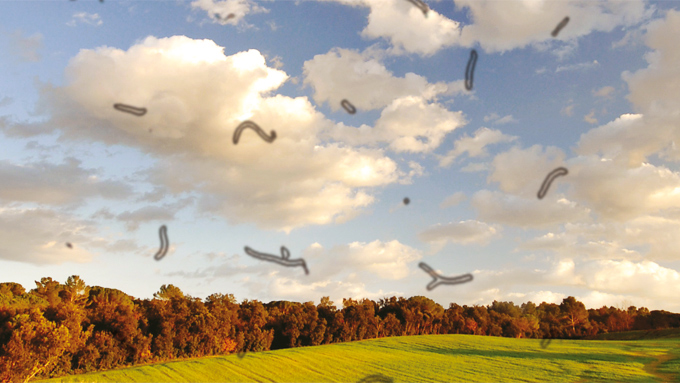
The “eye worms” drift into your field of vision and disappear. But if they don’t go away and you feel itchy, go to the hospital.
In a case report published in The New England Journal of Medicine, French doctors described a patient who suffered from maggots, which are larvae of flies, that entered his eye.
The male patient is a 53-year-old man who presented to the emergency room because of persistent itchy eyes. He said he was gardening next to a sheep farm when a foreign object flew into his eye. Since then, his eyes have been itchy and red. The itch lasted for several hours, causing him to go to the hospital for a check-up.
Here, the doctors confirmed the man’s eye socket was inflamed and his conjunctiva was congested. While trying to figure out what caused his condition, doctors suddenly discovered a bunch of larvae squirming around in his eyeballs.
“This invasive larva was later identified as that of Oestrus ovis, also known as the sheep fly. It is possible that a fly flew into the patient’s eye and laid eggs there“, the report reads.
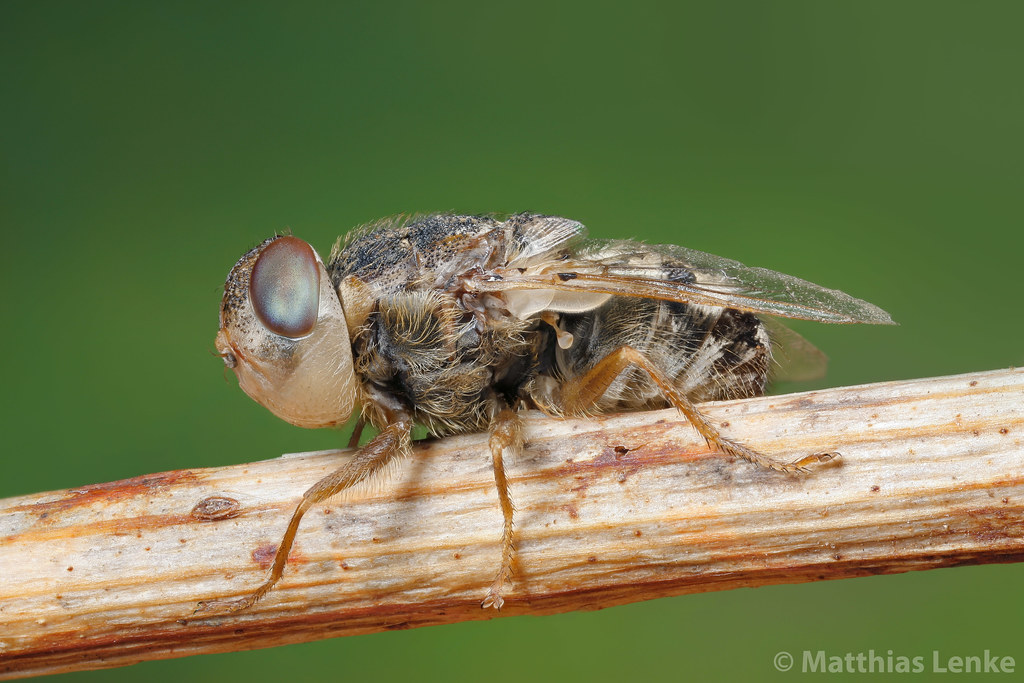
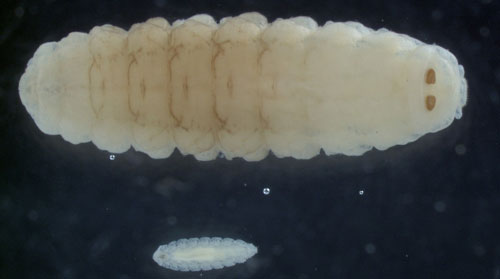
A sheep fly and its larvae.
The sheep fly is a fairly common species in France and many countries around the world. They are so named because of the habit of laying eggs in the nostrils of cattle, especially sheep and goats.
The larvae will migrate to the nasal cavity, feed on mucus and develop into maggots until reaching a size of about 2.5 cm. A few weeks later, when the sheep sneeze, the maggots will fall to the ground, continue to pupate and hatch into adult flies.
In rare cases, however, a female sheep fly can mistake a human eye for a cattle nostril and lay eggs in it. These eggs then hatch into maggots and fester in the human eyeball.
Actually, this is not good for the flies, because our tears have a certain amount of antibiotics. Fly larvae will not be able to survive to adulthood in the human eye. Even so, they can still be harmful.
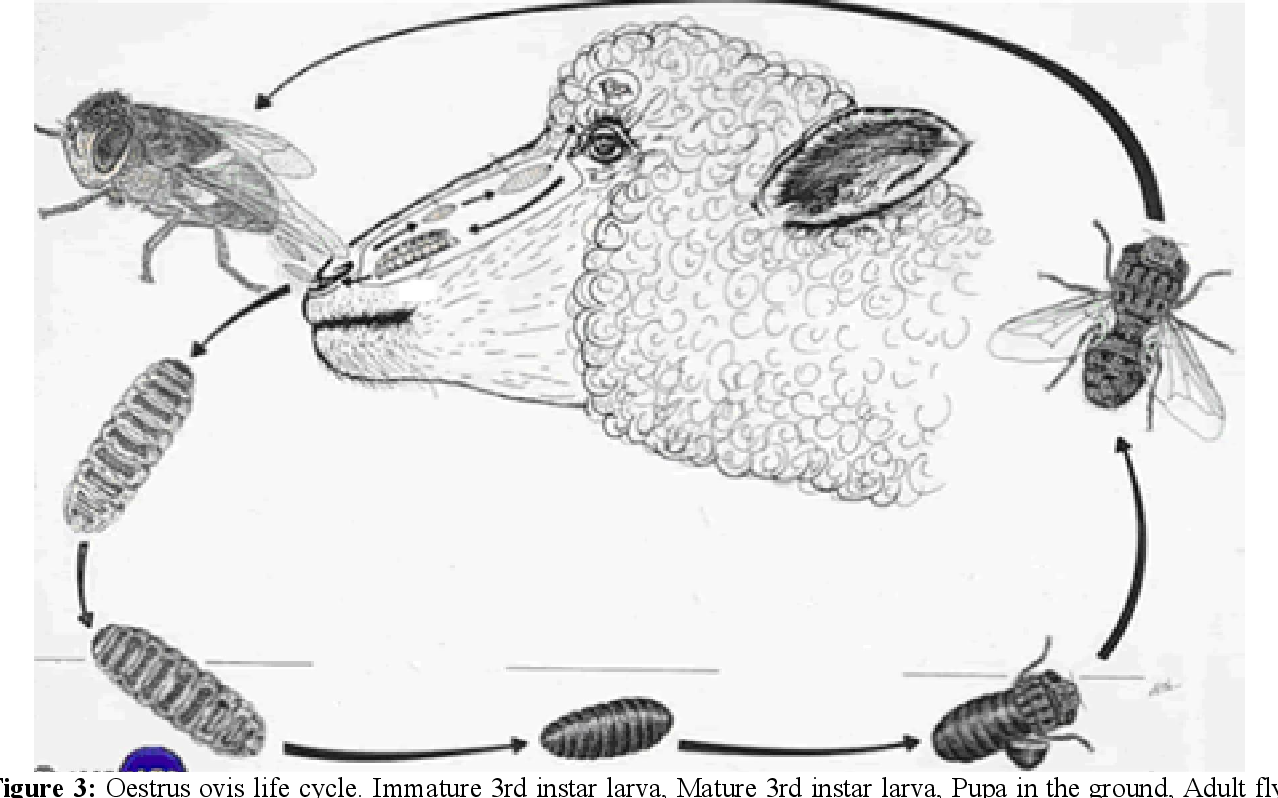
Usually, sheep flies will lay their larvae in the nose of cattle, but in some cases, they will mistakenly lay the human eye.
That’s because the larvae of the sheep fly grow to a certain extent when they develop sharp spines that poke out of the body. These spikes can irritate and wear down the eye’s cornea as they move. As a result, the patient will experience itching, redness, swelling, and watery eyes.
In rare cases, fly larvae can even get deep inside the eyeball. Once inside, they can cause more serious damage, affecting the patient’s vision, including: water bubbles in the field of vision, seeing flashing lights, foreign objects obstructing vision. vision and eye pain.
Even dead maggots left inside their carcass can cause severe inflammation. In cases where the inflammatory response is not prevented in time, the patient may experience temporary blindness.
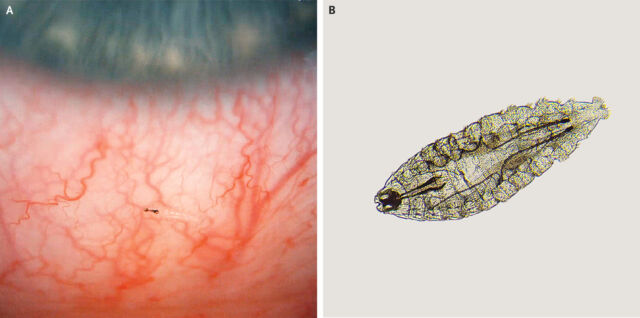
A sheep fly larva is pictured in the French man’s eye and after being removed.
Fortunately for the French farmer, the maggots of the sheep fly have not yet grown large enough to grow thorns. They also only penetrated the outside of the eyeball muscle and didn’t even affect his vision.
The doctor noted during the eye exam that the patient still achieved 20/20 vision. Only his right eye was red and irritated. To treat him, the doctors decided to use tweezers to remove the maggots, and they counted more than 10 in all.
The man was given an additional prescription of 10 days of oral antibiotics before being examined again. As a result, his symptoms and eyes have fully recovered.
Through this case report, French doctors want to warn farmers who work near cattle farms, especially sheep, horses and goats to protect their eyes. Although eye infections with fly larvae are quite rare, the literature reports about three of these cases each year.
Refer to Arstechnica
